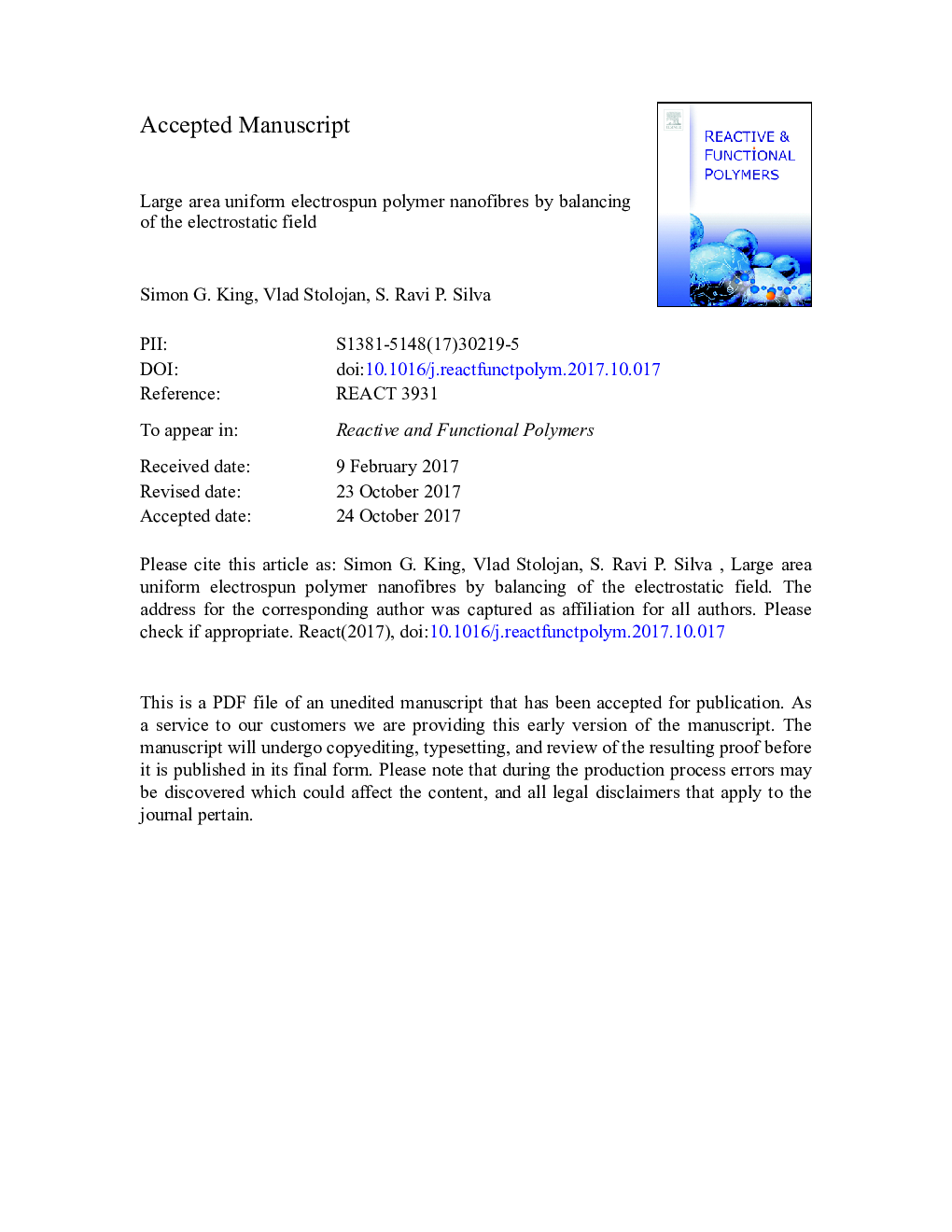| Article ID | Journal | Published Year | Pages | File Type |
|---|---|---|---|---|
| 7826145 | Reactive and Functional Polymers | 2018 | 21 Pages |
Abstract
As a technique, electrospinning has been increasingly utilised for polymer nanofibre production, which has a growing list of advanced applications to which they are being applied. However, commercially scaling the process is challenging, especially when the uniformity of the nanofibres across the bulk of the material is important for the required application. At present, most commercially-scalable systems tend to rely on a drum or cylindrical-style electrode, where a multitude of electrospinning jets are formed with no specific controlled distribution or uniformity over its surface. These electrospinning systems also have the drawback of possessing a varying electrostatic field across the length of the electrode, resulting in a range of spinning conditions which result in an inconsistency in the produced nanofibres. Due to the high centrifugal stresses exerted on the polymer during electrospinning, controlling the electrostatic field is crucial for consistent nanofibre production, which forms the basis for applications such as cellular scaffolds and smart materials. In the work reported here, we utilise computational simulation to explore a range of electrode designs to achieve a large area electrospinning system with a balanced electrostatic field across its entire active surface. We demonstrate the output by producing a high-throughput of nanofibres with comparable properties to that of a traditional single spinneret system, but at a processing rate two orders of magnitude faster.
Related Topics
Physical Sciences and Engineering
Chemistry
Organic Chemistry
Authors
Simon G. King, Vlad Stolojan, S. Ravi P. Silva,
